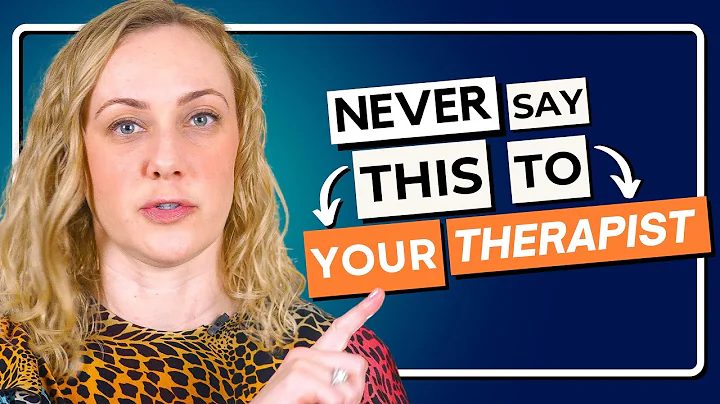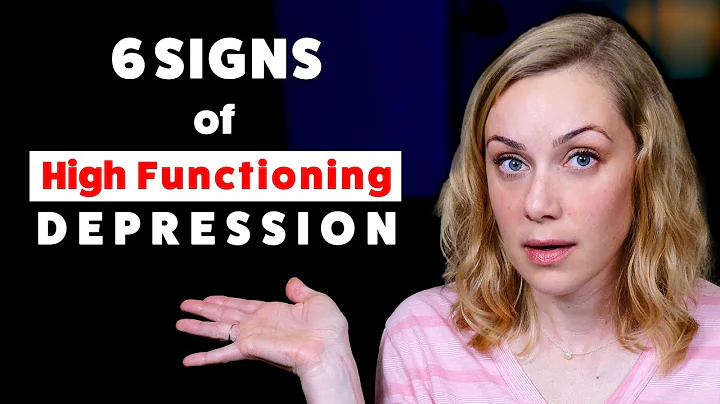I am Xiao Lai. You are welcome to click "Follow" me in the upper right corner to share interesting historical stories and various practical dry goods with you.

In today's era, whether in reality or on the Internet, there are a variety of sales traps almost everywhere. It is easy for people to step in without paying attention. When they come back, they regret it.
Knowing some common sense of consumer psychology can allow you to quickly see through these sales routines, avoid being deceived by unscrupulous merchants, hold your wallet tight, and spend rationally.
The following are 11 seemingly simple but full of subtle consumer psychology common sense in life.
1. Price mantissa illusion
We often see 2498, 199, 9.99 and other price goods in the shopping malls, which are very eye-catching. These commodities are so priced, but there is a lot of mystery.
9 and 8 are at the end of the numerical sorting. It is easy to give people the illusion that 2498 is approximately equal to 2400, and that 9.99 is far from 10 yuan. Buyers are more psychologically acceptable and can give consumers an excellent hint , To facilitate the conclusion of the transaction.
This is the illusion of the mantissa of the price.
2. Matching effect
Someone gets an empty bird cage,He usually buys another bird to use this cage instead of throwing it away.
This effect refers to the fact that people consciously or unconsciously add more things they don't need on the basis of accidentally obtaining an item they don't need.
After someone buys a beautiful desk, they will then want to buy suitable bookshelves, chairs, lamps and other accessories, and then even the floor should be matched. They are just hitting the "matching effect".
When we get a new item, we will continue to configure the appropriate items to achieve psychological balance.
Interrelated items are always placed together, such as toothbrushes, toothpaste and mouthwash cups, instant noodles and soup bowls. I want you to buy a set.
3. Bebo law
refers to when a person experiences a strong stimulation, the subsequent stimulation becomes insignificant. In other words, a big stimulus can dilute the small stimulus that follows.
For example, if the original 1 yuan popsicle becomes 10 yuan, you will definitely not accept it. But if the original 5,000 mobile phone goes up by 200 yuan, you will feel normal.

4. The IKEA effect
let consumers do it themselvesThis makes them like this thing more and gives it higher value. This phenomenon is called the "IKEA effect."
Psychological research pointed out that if customers put in manual labor to assemble furniture, customers will have an irrational affection for the furniture they assemble, and then overestimate the value of the furniture because they don’t want to let the items with their own labor. Belong to someone else.
So IKEA sells semi-finished products, let you do it yourself, lift up wrenches and screws, assemble chairs, tables and even beds. It can also save inventory space and reduce prices. On the contrary, more and more people are buying, and the effect of labor has been exerted to the extreme.
is similar to the puppy effect, also called the trial effect.
The child is having fun with the puppies in the pet shop. When he can’t bear to leave, if the owner knows the child’s parents, he will generously say that you can take the puppies home and raise them for a few days. Just send it back again.
Most parents and children can't resist this temptation at all. In the days with the puppy, the family is very happy. After a few days, they have feelings with the puppy, and then the family is likely to buy this A pet dog, even if the price may exceed psychological expectations.
5. Bait effect
When people buy things, they rarely buy directly without comparison. Then, in order to allow consumers to make purchase decisions better and faster, merchants often provide a "bait" for the target product, thereby guiding consumers to make decisions that are "in the middle of the business".
This behavior has proven to be quite common.There is a famous TED talk about such an advertising case:
"The Economist" magazine sales advertisement:
electronic subscription price is 59 yuan / issue;
print edition The subscription price is 125 yuan/period.
The next operation uses the "bait effect", electronic version subscription + print version dual subscription, how much do you guess?
is still 125 yuan/period.
For this reason, a professor from MIT of has personally tested: When these three prices exist, most students choose the dual subscription version. But if the dual version option is removed, most students choose to buy the cheapest electronic version.
For another example, when we go to shopping malls, we often encounter such activities, "Buy any piece of clothing, add 2 yuan to get a pair of branded socks!" and "A hat is 49 yuan and a sweater is 399 yuan. But , It is worth thinking about the last line of words: hat + sweater = 399 yuan!".
These are all applications of the "bait effect". Clothes are the target products, and "socks and hats" are the bait.
6. Goal approaching effect
The more we approach a goal, the more we are willing to complete it at all costs. This is called goal approaching effect in psychology.In layman's terms, people are willing to pay more for the part that needs to be completed in the end in order to prevent the huge cost spent before.
For example: the milk tea shop stamps and stamps, every time a cup of milk tea is consumed, a stamp is stamped, and a free cup is given for every ten stamps. When we consume more than six or seven cups, the next few cups will be completed in a very short time.

7. Intermediate effect
"Wood show in the forest, the wind will always be destroyed by the crowd, and humans are always afraid of being isolated from the crowd and being exposed to the subconscious." Brings an inexplicable sense of security. Based on this psychological characteristic, cunning marketers have discovered the middle term effect.
When we are taking wedding photos, if the sales staff ask us to choose the third gear "6888, 8888, 12888", most people will choose the 8888 gear.
When we order a meal in a restaurant, we find that the items on the first few pages of the menu are often very expensive. But continue to turn back, when you see the middle pages, there are many dishes that are still high in price, but still acceptable, such as 128 lamb chops, 98 trotters, etc., and then turn back, there will be 20 to 30 Yuan's home cooking.
If you invite people for dinner, you will definitely think that 20 or 30 people are too shameless, but thousands of them are too expensive, usually around 100. They are not too expensive and have a face.
8. The principle of reciprocity
If only one party gets the benefit, and the other party does not, then under equal conditions, the party who gets the benefit will have a certain degree of guilt (excluding those with thick-skinned or abnormal psychology).
Just like a friend often invites you to dinner, you will definitely find some way to repay him.
Many fake monks come to give you a small blessing bag for free, bless you, and then take out a small book and ask you to donate, you will give you 10 yuan, 20 yuan, otherwise it seems psychologically uneasy. Shopping malls free trial, sample application, free tasting, etc. are all marketing methods that use the principle of reciprocity.
9. mental account
We often see "100% off 1000 yuan" when we go to the clothing store. ,why?
Suppose two scenarios:
(1) You accidentally slapped it one day, and the repair cost 1,000 yuan; you were in a bad mood, but when you got home you found that you won 200 yuan in the lottery.
(2) One day you accidentally slapped and repaired the car and spent 800 yuan.
In the two cases, which situation will make you feel better? I think most people choose the first one, and the test results are true.
What is the reason? Because people often set up different "mental accounts" for gains and losses, and treat them clearly differently.
The repair fee is in our psychological "accidental loss account",At this time, the difference between 1000 and 800 is not much, and the pain caused to us is almost the same. The winning is in our "windfall account", 200 is obviously more, which can bring a lot of happiness.
Similarly, the full reduction strategy also applies this principle.
There is a 20% discount on a product, and you can buy something for 1,000 yuan for 800. The difference does not seem to be big. But if it is over 1,000 minus 200, and some even give away coupons for full amount (for example, if you spend over 1,000, get 200 cash coupons, you can buy anything), consumers will feel that they get more discounts.
Everyone has a mental account. If you want someone to buy something, you must give him a reason to satisfy this account, so as to reduce psychological guilt and facilitate the purchase.
The merchant will analyze which mental accounts the target has and which mental accounts are willing to spend money on, and then design corresponding emotional strategies accordingly.
For example, if you buy the same clothes with a price of 5,000 yuan, you may feel expensive and reluctant to buy it for yourself. But if it's a gift for a lover, you might get it without hesitation.
This is the "mental account" that divides expenditure into two different types. Buying clothes for yourself is a "daily clothing expense", but buying clothes for a lover is an "emotional expense". Obviously most people are more willing to spend money for the latter.
10. The scarcity principle effect .
means the fewer opportunities, content or products,The greater its value.
For example, tell customers that a certain product is limited in quantity and cannot be guaranteed to be available. Therefore, sales methods such as "deadline", "rush to buy", and "seckill" can strongly stimulate customers' desire to buy.
The most famous case of scarcity in the world is undoubtedly the marketing of diamonds.
In the 1870s, a large number of diamond mines were discovered in southern Africa. At that time, several tons of diamonds could be mined every year. The Popige meteorite mine announced by Russia a few years ago has an astonishing hundreds of thousands of tons of diamond reserves. It can be said that diamonds are not scarce on earth at present.
So why are diamonds so precious?
Because European and American diamond merchants united, they established the world's largest diamond company- De Beers .
The first thing did when the company was established was to control almost all diamond mines in the world through huge financial resources. So as to control the global diamond production in a small range. Artificially created the illusion that "things are rare and expensive". Thus ensuring the value of diamonds.
then invested huge funds and bombarded all major media, successfully binding the sacred love in people's hearts with diamonds, and it has continued to this day.
By the way, the famous ad slogan produced by De Beers: "Diamonds are forever, and a diamond is always passed on." What this sentence really means is: Don’t buy your diamonds. Sell it!

11. Little temptation in shopping malls.
There will always be chewing gum, condoms and some simple and cheap things that are often needed in front of the checkout counter, because it allows you to buy it while waiting for the checkout time to see it.
The best-selling beverages in the supermarket are placed at the very end, so that you can shop for a while. Products with low profit and long shelf life are often placed in the innermost or lowermost layer. Products with high profits and nearing shelf life are placed in the most eye-catching position.
If you are in a supermarket, you will always feel that your queue will be slow. The reason is that, assuming 8 channels, you only have 1/8 chance of ranking the fastest, but 7/8 chance of ranking the slowest.
Finally, I will tell you a way to avoid being fooled by the business and to hold your wallet tightly.
is very simple. No matter how cheap and attractive products you see, don’t pay for it easily. Stick to one rule- only buy the product you need .
I am Xiao Lai, I like to share my reading notes and experience, and I also like to write historical stories and various practical dry goods. I am grateful that my text meets you, and your likes are created by me power. [Be careful]
Selected articles on dry goods in the past:
Learn these 4 tricks,Teach you to quickly get out of emotional distress
Selected historical articles:
The development history of the "White Snake" story, restoring a true white snake legend
Qi Huan Gong and Guan Zhong: From the Enemy To the best partner
.










